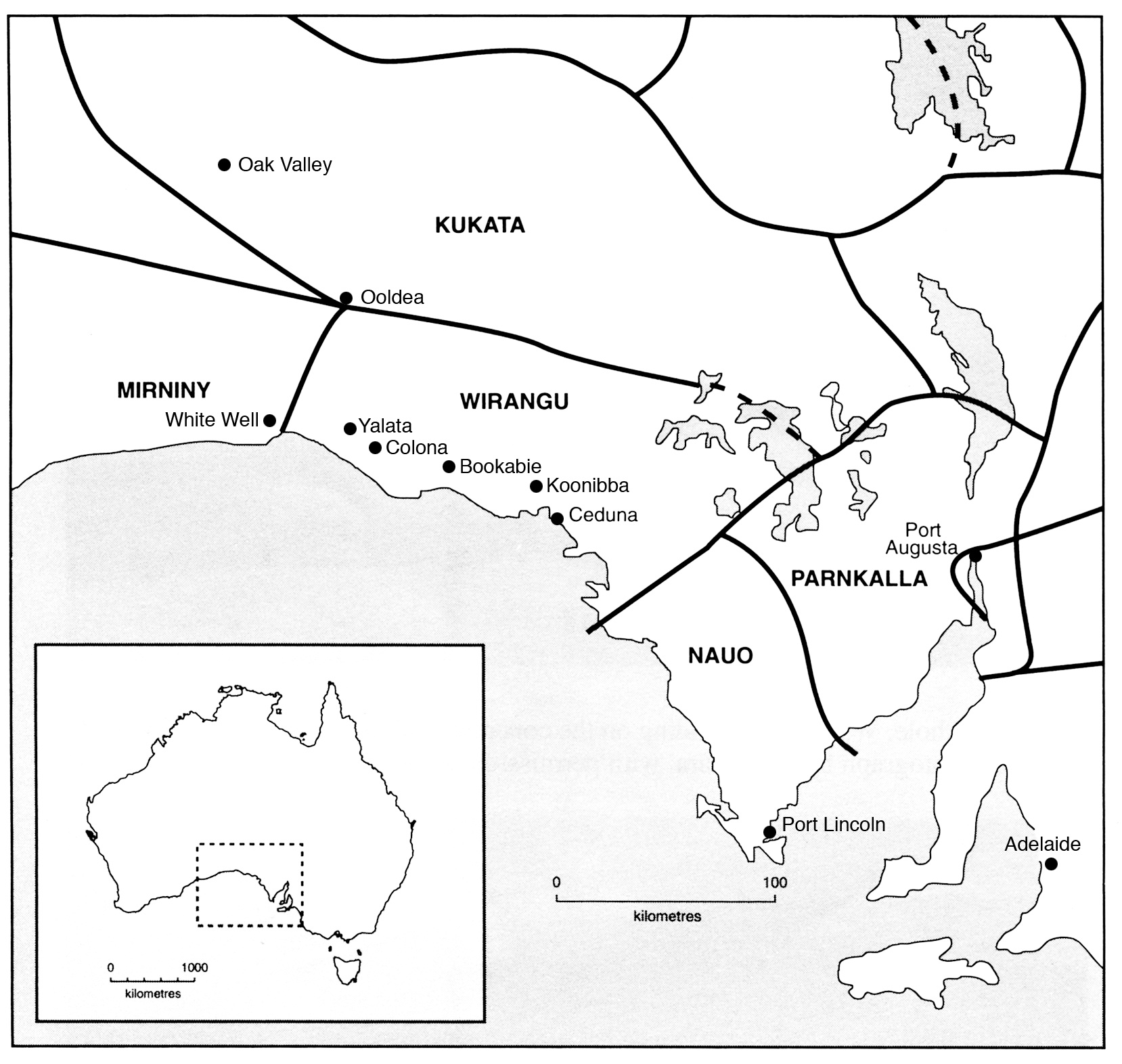Nukunu Language on:
[Wikipedia]
[Google]
[Amazon]
Nukunu (or Nugunu or many other names: see below) is a
 Nukunu is a Pama–Nyungan language, closely related to neighboring languages in the Miru clusterHercus pp. 1; Schmidt called this cluster (a subgroup of Thura–Yura) as "Miru" in 1919. Perhaps these languages are part of the Kadli group as well. like Narungga,
Nukunu is a Pama–Nyungan language, closely related to neighboring languages in the Miru clusterHercus pp. 1; Schmidt called this cluster (a subgroup of Thura–Yura) as "Miru" in 1919. Perhaps these languages are part of the Kadli group as well. like Narungga,
moribund
Moribund refers to a literal or figurative state near death.
Moribund may refer to:
* ''Moribund'' (album), a 2006 album by the Norwegian black metal band Koldbrann
* " Le Moribond", a song by Jacques Brel known in English as "Seasons in the Sun ...
Australian Aboriginal language
The Indigenous languages of Australia number in the hundreds, the precise number being quite uncertain, although there is a range of estimates from a minimum of around 250 (using the technical definition of 'language' as non-mutually intellig ...
spoken by Nukunu people on Yorke Peninsula
The Yorke Peninsula, known as Guuranda by the original inhabitants, the Narungga people, is a peninsula located northwest and west of Adelaide in South Australia, between Spencer Gulf on the west and Gulf St Vincent on the east. The peninsula ...
, South Australia
South Australia (commonly abbreviated as SA) is a States and territories of Australia, state in the southern central part of Australia. With a total land area of , it is the fourth-largest of Australia's states and territories by area, which in ...
. As of 2017, there is a revival and maintenance programme under way for the language.
Names
This language has been known by many names by neighbouring tribes and Australianists, including: *Nukuna, Nokunna, Noocoona, Nookoona, Nuguna, Nukana, Nukunnu, Nukunu, Njuguna *Doora *Pukunna *Tjura, Tyura *Wallaroo, Warra *Wongaidya (from , present tense form of verb 'to speak')Classification
 Nukunu is a Pama–Nyungan language, closely related to neighboring languages in the Miru clusterHercus pp. 1; Schmidt called this cluster (a subgroup of Thura–Yura) as "Miru" in 1919. Perhaps these languages are part of the Kadli group as well. like Narungga,
Nukunu is a Pama–Nyungan language, closely related to neighboring languages in the Miru clusterHercus pp. 1; Schmidt called this cluster (a subgroup of Thura–Yura) as "Miru" in 1919. Perhaps these languages are part of the Kadli group as well. like Narungga, Kaurna
The Kaurna people (, ; also Coorna, Kaura, Gaurna and other variations) are a group of Aboriginal people whose traditional lands include the Adelaide Plains of South Australia. They were known as the Adelaide tribe by the early settlers. Kau ...
, and Ngadjuri.
Phonology
Vowels
Nukunu has three different vowels with contrastive long and short lengths (a, i, u, a:, i:, u:).Consonants
The Nukunu consonantal inventory is typical for a Pama–Nyungan language, with six places of articulation for stops and nasals. There are three rhotics in the language. A phonemic voicing contrast exists in Nukunu, but it has only been observed in the retroflex stop series. An example demonstrating such a contrast intervocalically is ''kurdi'' (phlegm
Phlegm (; , ''phlégma'', "inflammation", "humour caused by heat") is mucus produced by the respiratory system, excluding that produced by the throat nasal passages. It often refers to respiratory mucus expelled by coughing, otherwise known as ...
, IPA kuɖi and ''kurti'' ( quandong, IPA kuʈi.
History
In contrast with other Thura–Yura languages, Nukunu did not partake in either the initial th- lenition before vowels or the lenition of initial k- before vowels.Notes
References
* Thura-Yura languages {{ia-lang-stub